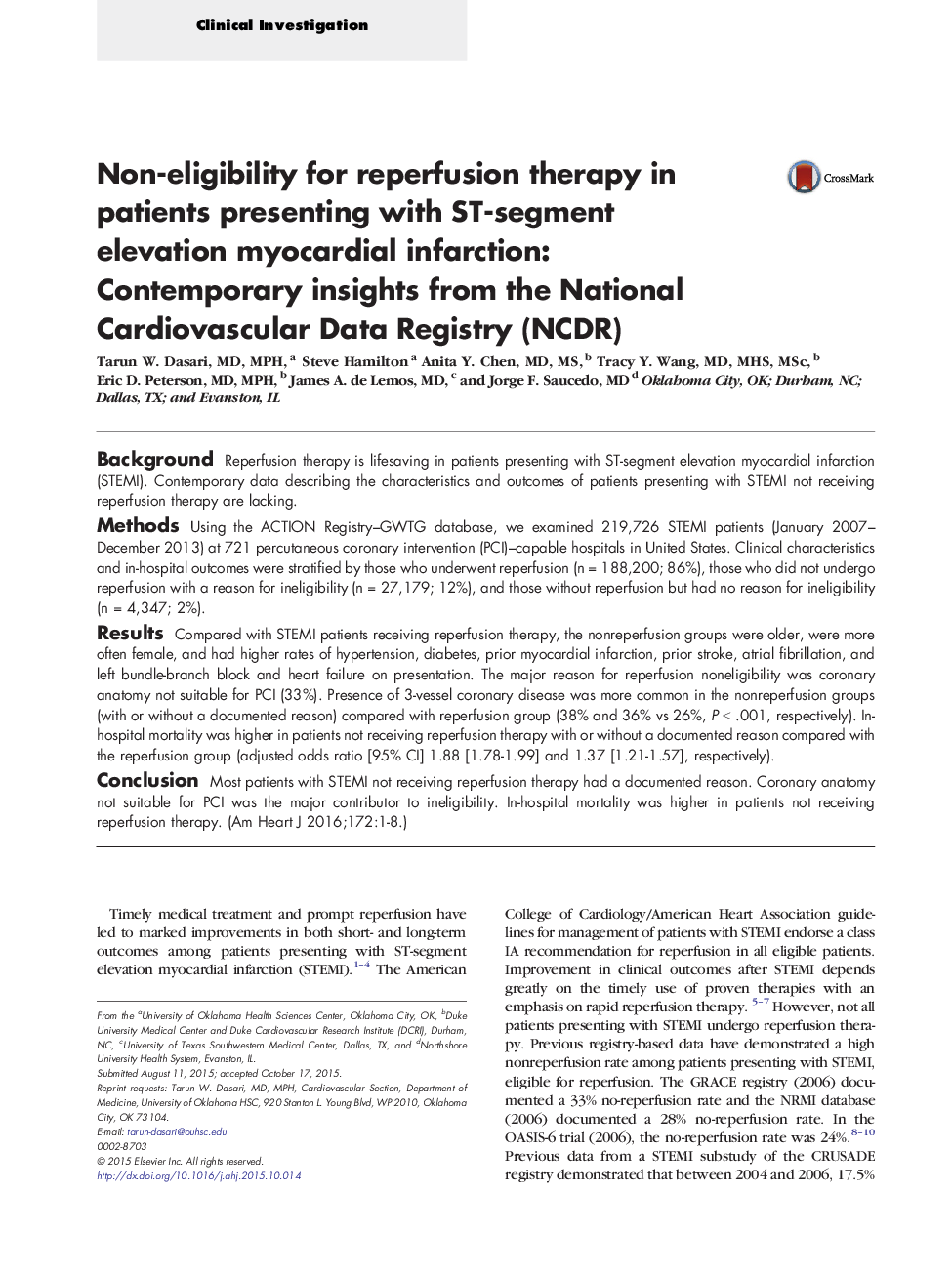| کد مقاله | کد نشریه | سال انتشار | مقاله انگلیسی | نسخه تمام متن |
|---|---|---|---|---|
| 5927984 | 1571443 | 2016 | 8 صفحه PDF | دانلود رایگان |

BackgroundReperfusion therapy is lifesaving in patients presenting with ST-segment elevation myocardial infarction (STEMI). Contemporary data describing the characteristics and outcomes of patients presenting with STEMI not receiving reperfusion therapy are lacking.MethodsUsing the ACTION Registry-GWTG database, we examined 219,726 STEMI patients (January 2007-December 2013) at 721 percutaneous coronary intervention (PCI)-capable hospitals in United States. Clinical characteristics and in-hospital outcomes were stratified by those who underwent reperfusion (n = 188,200; 86%), those who did not undergo reperfusion with a reason for ineligibility (n = 27,179; 12%), and those without reperfusion but had no reason for ineligibility (n = 4,347; 2%).ResultsCompared with STEMI patients receiving reperfusion therapy, the nonreperfusion groups were older, were more often female, and had higher rates of hypertension, diabetes, prior myocardial infarction, prior stroke, atrial fibrillation, and left bundle-branch block and heart failure on presentation. The major reason for reperfusion noneligibility was coronary anatomy not suitable for PCI (33%). Presence of 3-vessel coronary disease was more common in the nonreperfusion groups (with or without a documented reason) compared with reperfusion group (38% and 36% vs 26%, P < .001, respectively). In-hospital mortality was higher in patients not receiving reperfusion therapy with or without a documented reason compared with the reperfusion group (adjusted odds ratio [95% CI] 1.88 [1.78-1.99] and 1.37 [1.21-1.57], respectively).ConclusionMost patients with STEMI not receiving reperfusion therapy had a documented reason. Coronary anatomy not suitable for PCI was the major contributor to ineligibility. In-hospital mortality was higher in patients not receiving reperfusion therapy.
Journal: American Heart Journal - Volume 172, February 2016, Pages 1-8